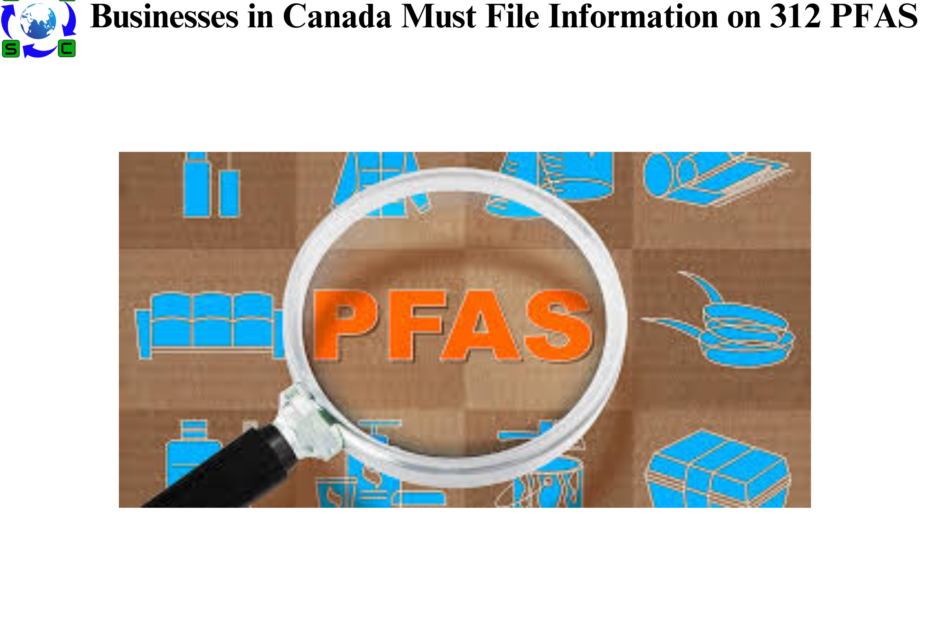 In accordance with Canadian Environmental Protection Act of 1999 section 71(1)(b), the Canadian Department of Environment has published a new notice. By January 29, 2025, pertinent parties are required by this notice to provide obligatory data on 312 kinds of PFAS that were manufactured, imported, or utilized in goods that exceeded certain criteria in 2023.
In accordance with Canadian Environmental Protection Act of 1999 section 71(1)(b), the Canadian Department of Environment has published a new notice. By January 29, 2025, pertinent parties are required by this notice to provide obligatory data on 312 kinds of PFAS that were manufactured, imported, or utilized in goods that exceeded certain criteria in 2023.
Reporting Requirements
Three sections comprise the 312 specified PFAS in Schedule 1 of the notice: Part 1 contains 273 compounds, Part 2 contains 26, and Part 3 has 13. Various types of chemicals are subject to various criteria.
For imported completed products, enterprises in Canada must adopt tiered reporting by 2023 if they satisfy any of the following threshold criteria:
- producing anything over 1000 grams (2.2 pounds) of any of the 312 PFAS in the list;
- importing over 10 grams (0.35 ounces) of Part 1 PFAS or over 100 kilograms (220 pounds) of Part 2 or Part 3 PFAS, regardless of the material’s presence in combinations, products, or concentrations higher than 1ppm in 12 designated categories of reportable finished goods;
- importing more than 100 kilos of any of the 312 PFAS mentioned, with final products not falling under one of the 12 designated categories and quantities above 1 ppm;
- using more than 10 grams of mentioned per- and multi-part composites, or goods, containing more than 1 ppm of listed per-part composites.
When imported items falling under any of the following 12 categories contain identified PFAS over designated criteria, they must be fully reported:
- items such as play mats, teething toys, and pacifiers for kids under 14;
- objects intended to come into touch with the mucous membranes of the body, such as women’s goods, contact lenses, hearing aids, masks, etc.;
- Products like air fresheners, face masks, dryer sheets, candles, and phone covers that might be inhaled or come into touch with the skin or oral cavities;
- utensils and cookware that come into close touch with hot food or liquids;
- food packaging supplies, such as food cans, lid liners, and disposable dinnerware;
- reusable food and drink containers, such as travel cups and baby bottles;
- apparatus used in food preparation, such as trays, big tubs, nozzles, molds, and cutters;
- apparel and footwear, such as sports gear, personal flotation devices, and protective apparel for work environments;
- Towels, sleeping bags, and bedding;
- When PFAS are found in foam, leather, or textile fibers, yarns, or textiles, they are found in furniture, mattresses, seat cushions, pillows, and so on;
- floor foam mats, vinyl or laminate floors, and carpets;
- Applications where it is anticipated that specified PFAS will be released from produced goods include perfumes and surfactants found in personal care wipes, and pigments, dyes, and solvents emitted from pens and markers.
Names, addresses, phone numbers, and other contact information of the responsible parties, as well as comprehensive facts on the manufacture, usage, and import amounts of each chemical item, are among the details that must be supplied. Only business information and “a short description and generic name of the manufactured item containing the substance” are required to be reported by those who do not fit into one of the 12 categories but still meet the stipulated standards.
Exemption
The following situations exclude reporting requirements:
- “Micro-enterprises” are defined as those that have less than five workers or a gross yearly revenue of less than $30,000.
- PFAS only if travelling via Canada.
- PFAS utilized for private gain.
- PFAS meant for scientific study or laboratory examination.
Submission Deadline
The manufacturing, importation, or use of specified PFAS involves facilities and amounts for which eligible organizations must furnish readily accessible comprehensive information. The submission period is around six months, and the deadline for reporting is January 29. They have until at least five business days before the January deadline to obtain an extension.








 Authorised IMDS & CDX Training & Consulting partner for
Authorised IMDS & CDX Training & Consulting partner for





